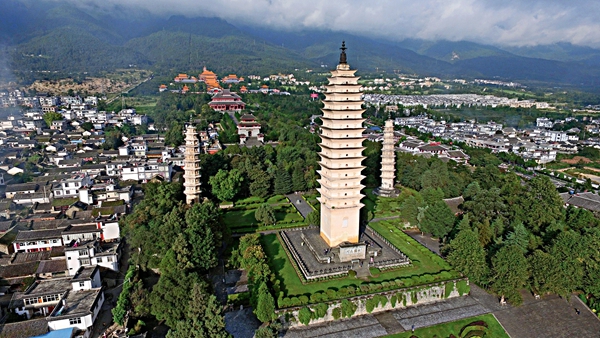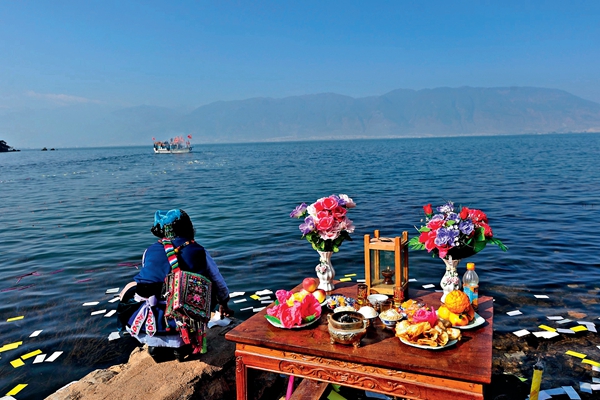Carnivals between Cangshan Mountain and Erhai Lake
China Today,January 09, 2018 Adjust font size:
The Bai people are China’s 15th largest ethnic minority. They live mainly in Yunnan Province, specifically in Dali Bai Autonomous Prefecture, and some in Guizhou and Hunan provinces.
Dali is where the Bai people’s ethnic roots are. From the 23rd to 25th day of the fourth lunar month every year, Bai people in Dali pray for rain and worship local patron gods (known as Benzhu in Chinese) in celebration of the grand traditional folk festival known as Raosanling. The event takes place mainly in Bai villages around Cangshan Mountain and the banks of Erhai Lake. A folk custom that harks back more than 1,000 years, Raosanling was among the first such items to be added to the National Intangible Cultural Heritage list in 2006.
The Carnival for the Bai
“Rao” means to saunter, as people do at this festival while intermittently breaking into song and dance. “Sanling” refers to the three symbolic gods. These encompass several local deities and ancestors that are part and parcel of the native Bai religion of Benzhuism, as well as Buddhist gods introduced to Dali. The three main places to worship them are Chongsheng Temple in Dali, the Benzhu Temple of Shengyuan Temple in Qingdong Village of Xizhou Town, and the Erhe Memorial Temple in Heyicheng Village of Xizhou Town. During the festival, thousands of Bai people from various villages set out on their pilgrimage from Dali City to Heyicheng Village to worship at these three temples.

The various groups depart from the city of Dali and gather at Chongsheng Temple’s three pagodas, where they burn incense and make their devotions.
This latter part of the fourth lunar month, usually mid-to-late May on the solar calendar, when the Raosanling Festival takes place, is shortly before the start of the busy rice growing season. It’s a time when the Bai people are in high spirits and full of hope that their devout worship will bring good weather that nurtures their crops and brings a bumper autumn harvest. People also take it as an opportunity to enjoy a spring outing before the busy farmwork begins.
On the morning of the 22nd day of the fourth lunar month, the Bai people walk out in groups from all quarters, carrying sacrificial vessels, a few belongings, food, and cooking utensils. Their destination is the Chenghuang Temple (which worships the local city god) in the ancient city of Dali. Having lit joss sticks and candles, they are equipped for their long journey.
There is an old saying in Dali: “The first day to the north, the second day to the south, and the third day to come home.” It refers to the route of the Raosanling pilgrimage. On the first day, various groups depart from the city of Dali and gather at Chongsheng Temple’s three pagodas, where they burn incense and make their devotions. After walking north for about 16 kilometers, singing and dancing as they go, they reach Shengyuan Temple on Cangshan Mountain. There they pray to the local god for good health and favorable weather so that the land will yield a bountiful harvest. After this ceremony, some people sing folk songs as others dance on the riverbank and in the nearby woods. They also burn incense and read scriptures for praying in the temple. At dusk, they set up pots near the temple and cook dinner, and later sleep either inside the temple or in the woods.

Local deity worship is a unique folk culture; a villager invites local deities onto a boat at the bank of Erhai Lake.
The next day, everyone sets out from Shengyuan Temple, wandering along in their accustomed musical style as they head for the Erhe Memorial Temple in Heyicheng Village near Erhai Lake. There they celebrate through the night, alternating between singing and dancing, cooking, or just resting around the temple. On the third day, everyone heads south on the return walk to Chongsheng Temple in Dali. There they pray for peace and the temple god’s blessing, and the three-day activity draws to a close.
During these three days, local people walk more than 40 kilometers, singing and dancing along the way. This is a magnificent and spectacular sight.